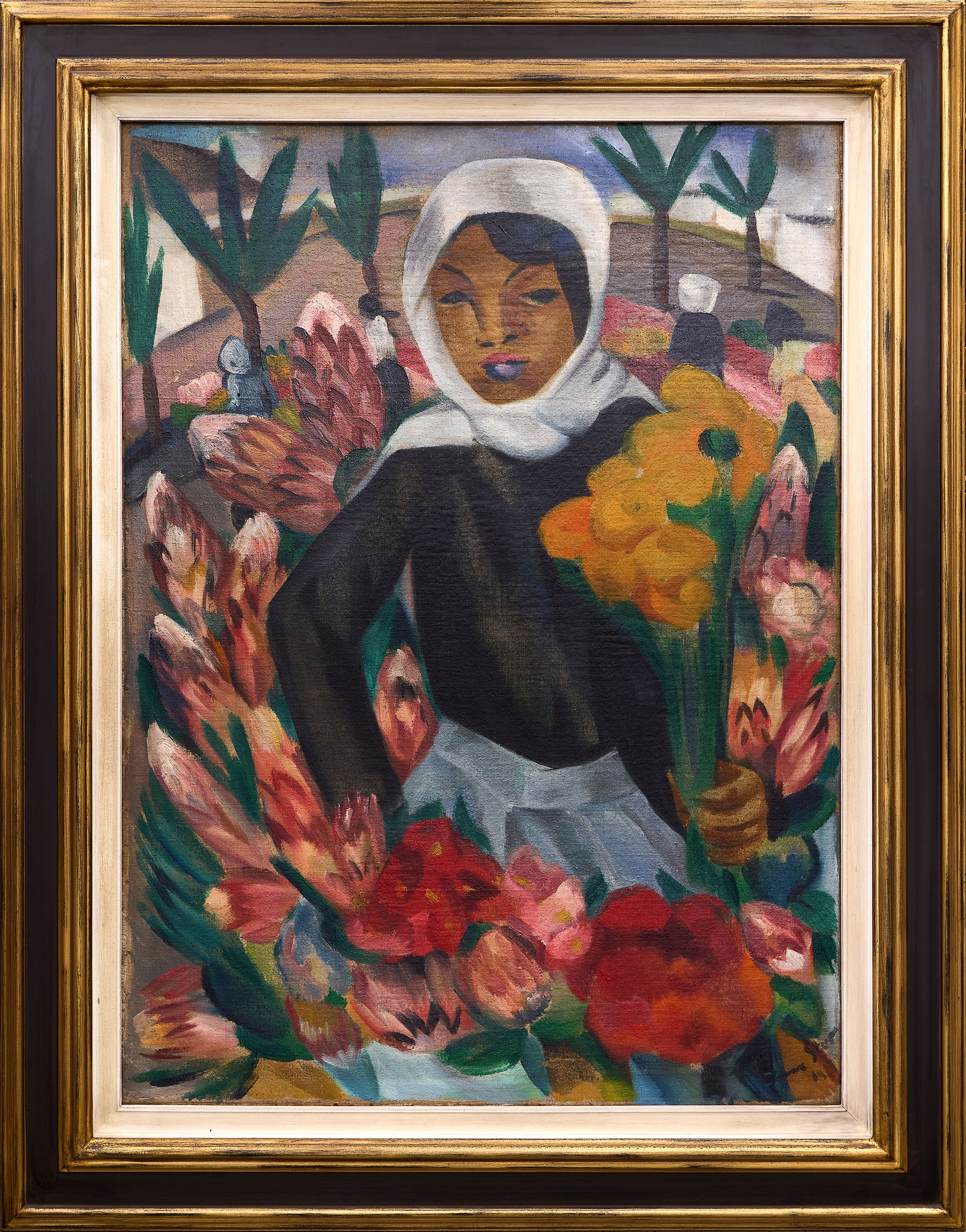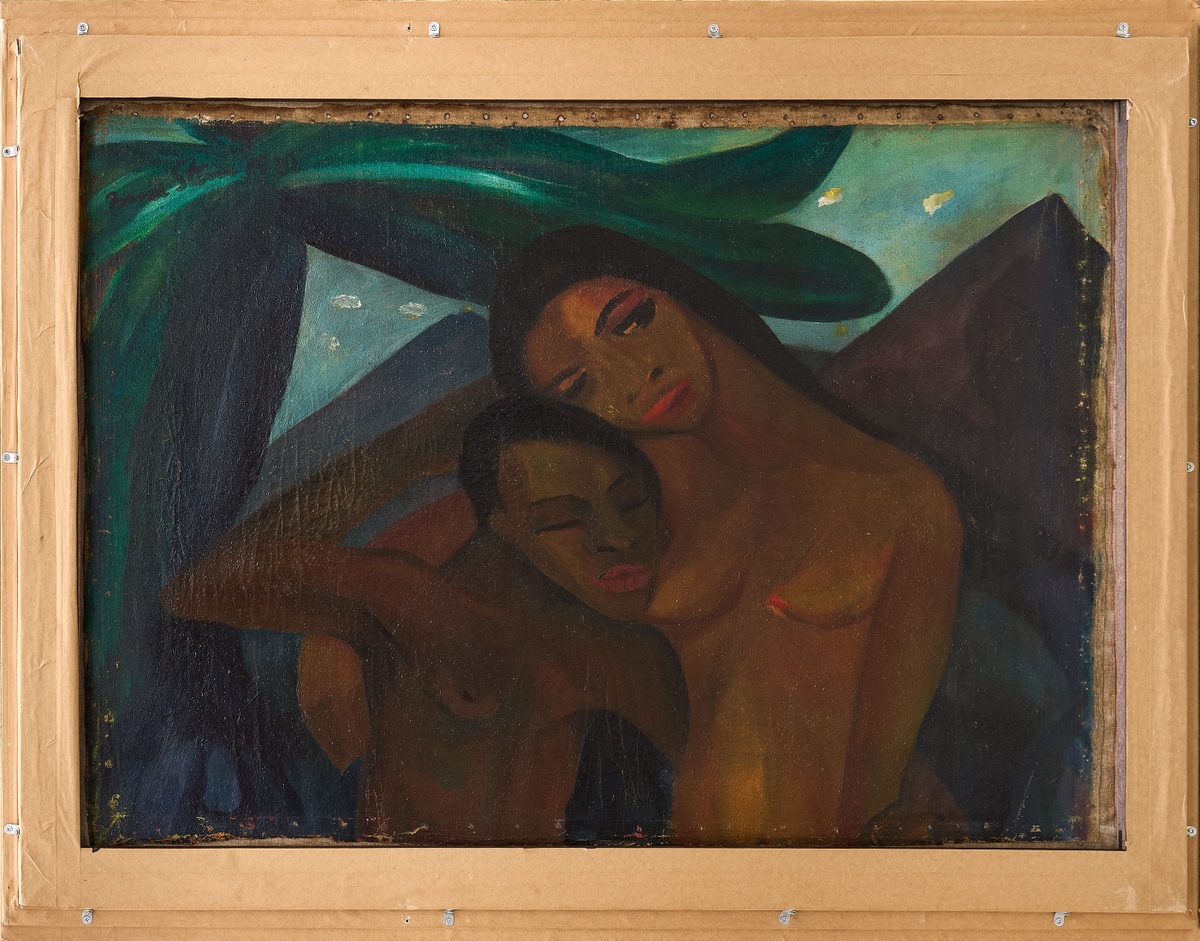Irma Stern
When Irma Stern returned to Cape Town from Berlin in 1920, she captured a moment in the city’s cultural history through a portrait of Armina Brenner, one of the matriarchs of Cape Town’s historic Adderley Street flower market. Armina was one of the five daughters of Hadira, who was recorded to be the first woman to sell flowers at the docks in Cape Town. The painting depicts Brenner holding indigenous flowers — a golden gerbera daisy and gladiolus stem — amidst a painterly thicket of proteas, all native to the Cape Floristic Region. The work reflects the artist's quest to reconnect with her African roots and her distinctive early style influenced by her Berlin mentor Max Pechstein, a renowned expressionist.
On its reverse is an earlier untitled work from 1920, depicting a nude woman and boy under a palm tree. The two canvases, joined, traveled from South Africa to Germany, then smuggled to Brazil during the Nazi regime's persecution of "degenerate art," before finally returning to Cape Town six decades later.
b. South Africa, 1894; d. South Africa, 1966
Schweizer-Reneke, a small town in the North West Province of South Africa, had “stretches of yellow plains with the blue, blue sky above” (Cape Argus, 1996) – this is where South African-German painter Irma Stern was born in 1894 into a field of colour. Her early years were spread between South Africa and Germany, set in motion by her father's imprisonment and subsequent release as a pro-Boer sympathiser during the Anglo-Boer War (1899–1902). This pattern of movement would become Irma’s way of understanding her world.
Best known for her eruptive flower studies and portraits from her travels in Southern Africa, the then-Belgian Congo and Zanzibar, Stern has been canonised as a key figure in South Africa’s art history. While celebrated for her sensitive approach to portraiture, capturing what she called the "soul of Africa," her gaze was inevitably filtered through European colonial fantasies. Although recognition came later in her life, today her work remains an opening through which we can examine the complex relationship between between 20th-century Europe and Africa, between historical preservation and exoticisation.

